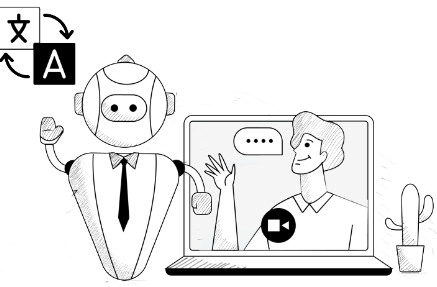Chatbots are the assistants of the future and they are taking the Internet by storm. Ever since their first appearance in 1994, the goal was to create an AI that could conduct a real dialogue with their interlocutors. The purpose is to free up customer service agents’ time so they could focus on more delicate tasks- which require a more human approach.
If you are thinking about including a chatbot on your website, here are the things you need to keep in mind to boost customer engagement and deliver high-quality services.
Define your audience
First things first- think about who will be interacting with the chatbot? Who are your customers? How do they talk? How can you address them in a way they’ll enjoy? How can you help them?
For instance, if your company sells clothes that are mostly designed for young adults, using a less formal tone will be much more appealing to them.
Lisa Wright, a customer service specialist at Trust My Paper advice: “Customer service calls are usually recorded, so listening to a few of them can be a good place to start designing your chatbot’s lines of dialogue.”
Give your bot some character
People don’t like to talk to plain, simple robots. Therefore, giving your chatbot some personality is a must. Some brands prefer naming their chatbots and even design an animated character for them. This makes the interaction more real.
For example, The SmarterChild chatbot- designed back in 2000, was able to speak to around 2,50,000 humans every day with funny, sad, and sarcastic emotions.
However, the chatbot’s character needs to match your brand identity and at the same time- appeal to customers. Think about – how would the bot speak, if they were real? Are there some phrases or words they would never use? Do they tell jokes? All these need to be well-thought through, before going into the chatbot writing and design phase.
According to a report published by Ubisend in 2017, 69% of customers use the chatbot to get an instant answer. Only 15% of them would interact for fun. Thus, don’t sacrifice the performance for personality.
Also read – 5 Key Success Metrics for Chatbots
Revise your goals before chatbot writing
Alexa- Amazon bot has 30+ skills which include scheduling an appointment, booking a cab, reading news, playing music, controlling a smartphone, and more. However, every business bot doesn’t need to be a pro in every assisting job.
Before entering the writing phase, think over once again – WHY you need a chatbot? Will it help customer service only? Or will it also help in website navigation, purchase, return, refund, etc.?
Usually, customers want one of the three things when they visit your site: an answer to something they’re looking for, make a purchase, or a solution to their problem. You can custom build your chatbot to tackle either one or all of these three situations. Many brands use chatbots to create tailored products for their clients.

AI in Insurance will value at $36B by 2026. Chatbots will occupy 40% of overall deployment, predominantly within customer service roles.
DOWNLOAD REPORT
Cover all possible scenarios
When you start writing the dialogue, consider the fact that a conversation can go in many directions. To ensure that all the situations are covered- start with a flowchart of all possible questions and the answers you chatbot can give.
To further simplify your chatbot writing, take care of one scenario at a time and focus on keeping the conversation short and simple. If the customer is too specific or is not satisfied with the bot’s response, do not hesitate to redirect them to your customer service representatives.
For instance, Xiaoice is one of the most successful interactive chatbots launched by Microsoft in July 2014. Within three months of its launch, Xiaoice accomplished over 0.5 billion conversations. In fact, speakers couldn’t understand that they’re talking to a bot for 10 minutes.
Also read – Why should businesses consider chatbots?
This article is contributed to Mantra Labs by Dorian Martin. Dorian is an established blogger and content writer for business, career, education, marketing, academics, and more.
Knowledge thats worth delivered in your inbox





